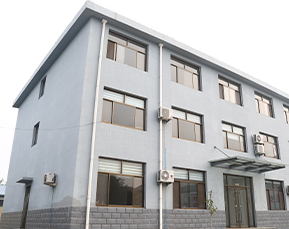 Afrikaans
Afrikaans  Albanian
Albanian  Amharic
Amharic  Arabic
Arabic  Armenian
Armenian  Azerbaijani
Azerbaijani  Basque
Basque  Belarusian
Belarusian  Bengali
Bengali  Bosnian
Bosnian  Bulgarian
Bulgarian  Catalan
Catalan  Cebuano
Cebuano  Corsican
Corsican  Croatian
Croatian  Czech
Czech  Danish
Danish  Dutch
Dutch  English
English  Esperanto
Esperanto  Estonian
Estonian  Finnish
Finnish  French
French  Frisian
Frisian  Galician
Galician  Georgian
Georgian  German
German  Greek
Greek  Gujarati
Gujarati  Haitian Creole
Haitian Creole  hausa
hausa  hawaiian
hawaiian  Hebrew
Hebrew  Hindi
Hindi  Miao
Miao  Hungarian
Hungarian  Icelandic
Icelandic  igbo
igbo  Indonesian
Indonesian  irish
irish  Italian
Italian  Japanese
Japanese  Javanese
Javanese  Kannada
Kannada  kazakh
kazakh  Khmer
Khmer  Rwandese
Rwandese  Korean
Korean  Kurdish
Kurdish  Kyrgyz
Kyrgyz  Lao
Lao  Latin
Latin  Latvian
Latvian  Lithuanian
Lithuanian  Luxembourgish
Luxembourgish  Macedonian
Macedonian  Malgashi
Malgashi  Malay
Malay  Malayalam
Malayalam  Maltese
Maltese  Maori
Maori  Marathi
Marathi  Mongolian
Mongolian  Myanmar
Myanmar  Nepali
Nepali  Norwegian
Norwegian  Norwegian
Norwegian  Occitan
Occitan  Pashto
Pashto  Persian
Persian  Polish
Polish  Portuguese
Portuguese  Punjabi
Punjabi  Romanian
Romanian  Russian
Russian  Samoan
Samoan  Scottish Gaelic
Scottish Gaelic  Serbian
Serbian  Sesotho
Sesotho  Shona
Shona  Sindhi
Sindhi  Sinhala
Sinhala  Slovak
Slovak  Slovenian
Slovenian  Somali
Somali  Spanish
Spanish  Sundanese
Sundanese  Swahili
Swahili  Swedish
Swedish  Tagalog
Tagalog  Tajik
Tajik  Tamil
Tamil  Tatar
Tatar  Telugu
Telugu  Thai
Thai  Turkish
Turkish  Turkmen
Turkmen  Ukrainian
Ukrainian  Urdu
Urdu  Uighur
Uighur  Uzbek
Uzbek  Vietnamese
Vietnamese  Welsh
Welsh  Bantu
Bantu  Yiddish
Yiddish  Yoruba
Yoruba  Zulu
Zulu pulley lagging rubber
The Importance of Pulley Lagging Rubber in Industrial Applications
Pulley systems are integral to a variety of industrial processes, serving as a cornerstone for material handling and transportation. A critical component in the efficiency and longevity of these pulley systems is the use of pulley lagging rubber. This specialized rubber material provides numerous benefits that enhance operational effectiveness, contribute to safety, and reduce maintenance costs.
Understanding Pulley Lagging Rubber
Pulley lagging is the process of applying a layer of rubber to the surface of a pulley. This layer serves several essential purposes, such as improving traction, minimizing slippage, and protecting the pulley from wear and tear. The rubber used for lagging comes in various compounds, each designed to withstand specific environmental conditions, loads, and operational demands.
Benefits of Pulley Lagging Rubber
1. Increased Traction One of the primary benefits of using rubber lagging is the significant increase in friction between the pulley and the belt. This enhanced traction is critical in preventing slippage, especially in high-load applications. Without proper lagging, slippage can lead to inefficiencies, extended cycle times, and even system failures.
2. Reduction in Wear and Tear Rubber lagging acts as a protective layer for the pulley's metal surface, mitigating the impacts of wear due to abrasion and environmental factors. By absorbing some of the shock and stress from the rotating belt, the lagging extends the life of the pulley, reducing the frequency of replacements and repairs.
3. Vibration and Noise Dampening Industrial applications often involve heavy machinery that generates substantial vibrations and noise. The rubber lagging helps dampen these vibrations, resulting in quieter operation. This not only enhances operator comfort but also contributes to a safer working environment.
pulley lagging rubber

4. Enhanced Load Distribution Rubber lagging assists in distributing loads evenly across the surface of the pulley. This helps to prevent localized wear and ensures that the stress on the belt and pulley system remains balanced, further extending equipment life.
5. Corrosion Resistance In environments where pulleys are exposed to chemicals, moisture, or extreme temperatures, rubber lagging provides an added layer of protection. Many rubber compounds are resistant to these harsh conditions, which helps in maintaining the integrity of the pulley over time.
Installation and Maintenance Considerations
While the benefits of pulley lagging rubber are clear, proper installation and maintenance are crucial for maximizing its advantages. The installation process must be executed with precision to ensure that the rubber adheres correctly to the pulley surface. Poor installation can lead to uneven wear, compromised traction, and a need for premature replacement.
Maintenance of lagged pulleys involves regular inspections for signs of wear or damage to the rubber layer. Operators should regularly assess the lagging for cracks, tears, or slipping to ensure it performs effectively. Maintaining optimal tension on the belt is also essential, as improper tension can lead to excessive wear on both the rubber lagging and the belt itself.
Conclusion
In conclusion, pulley lagging rubber is a crucial element in the functionality and longevity of industrial pulley systems. Its ability to enhance traction, extend equipment life, mitigate vibrations, and resist environmental wear makes it an indispensable material in the realm of material handling and transportation. As industries continue to evolve, investing in high-quality pulley lagging solutions will undoubtedly contribute to improved operational efficiency, reduced downtime, and greater overall safety in the workplace. For any industry that relies on pulley systems, understanding and implementing the best practices for rubber lagging can lead to significant returns on investment and a robust operational framework.
-
Revolutionizing Conveyor Reliability with Advanced Rubber Lagging PulleysNewsJul.22,2025
-
Powering Precision and Durability with Expert Manufacturers of Conveyor ComponentsNewsJul.22,2025
-
Optimizing Conveyor Systems with Advanced Conveyor AccessoriesNewsJul.22,2025
-
Maximize Conveyor Efficiency with Quality Conveyor Idler PulleysNewsJul.22,2025
-
Future-Proof Your Conveyor System with High-Performance Polyurethane RollerNewsJul.22,2025
-
Driving Efficiency Forward with Quality Idlers and RollersNewsJul.22,2025





























